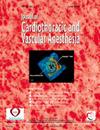硬膜外麻醉与区域麻醉在胸外科手术中的应用和结果:ACS-NSQIP分析
IF 2.3
4区 医学
Q2 ANESTHESIOLOGY
Journal of cardiothoracic and vascular anesthesia
Pub Date : 2025-03-01
DOI:10.1053/j.jvca.2024.12.020
引用次数: 0
摘要
目的 确定硬膜外麻醉与区域麻醉作为胸外科手术全身麻醉辅助手段的使用情况,并比较硬膜外麻醉与区域麻醉作为胸外科手术全身麻醉辅助手段时的住院时间、总发病率、严重发病率和死亡率。参与者18岁以上接受胸外科手术的患者(N = 18,433).干预措施使用全身麻醉和硬膜外麻醉或区域麻醉辅助手段的胸外科手术.测量和主要结果外周神经阻滞的使用率随着时间的推移而增加,接受肺叶切除术或肺切除术的患者使用率稳步上升。在倾向评分加权的广义线性模型中,接受外周神经阻滞的患者的住院时间比接受硬膜外麻醉的患者短(3.91 天,95% 置信区间 [CI]:3.83, 3.99 v. 3.83, 3.99 v. 3.99):结论 随着时间的推移,胸外科手术中外周神经阻滞的使用率也在增加。与硬膜外麻醉相比,接受外周神经阻滞的患者疗效更好。未来需要进行充分的研究,以评估在考虑其他因素(如手术方法、提供者、机构)时,研究结果是否保持一致。本文章由计算机程序翻译,如有差异,请以英文原文为准。
Utilization and Outcomes of Epidural Anesthesia Versus Regional Anesthesia for Thoracic Surgery: An ACS-NSQIP Analysis
Objectives
To determine the use of epidural anesthesia compared with regional anesthesia as an adjunct to general anesthesia in thoracic surgery over time, and compare length of stay, overall morbidity, serious morbidity, and mortality between epidural and regional anesthesia when utilized as adjuncts to general anesthesia in thoracic surgery.
Design
Retrospective data analysis from the American College of Surgeons National Surgical Quality Improvement Project data registry, years 2014 to 2022.
Setting
Over 800 U.S. hospitals.
Participants
Patients over 18 years of age undergoing thoracic surgery (N = 18,433).
Interventions
Thoracic surgery with general anesthesia and either epidural or regional anesthesia adjuncts.
Measurements and Main Results
Peripheral nerve block utilization increased over time, with a steady increase for patients undergoing lobectomy or pneumonectomy. In propensity score–weighted generalized linear models, patients receiving peripheral nerve blocks had shorter hospital stays relative to those receiving epidurals (3.91 days, 95% confidence interval [CI]: 3.83, 3.99 v 5.48 days, 95% CI: 5.40, 5.56, p < 0.001), lower odds of serious morbidity (odds ratio 0.81, 95% CI: 0.76, 0.86, p < 0.001), and lower odds of mortality (odds ratio 0.74, 95% CI: 0.59, 0.92, p = 0.008).
Conclusions
The rate of peripheral nerve blocks in thoracic surgery increased over time. Patients receiving peripheral nerve blocks, relative to epidural anesthesia, had better outcomes. Future, adequately powered research is needed to evaluate whether findings remain consistent when accounting for other factors (eg, surgical approach, providers, institutions).
求助全文
通过发布文献求助,成功后即可免费获取论文全文。
去求助
来源期刊
CiteScore
4.80
自引率
17.90%
发文量
606
审稿时长
37 days
期刊介绍:
The Journal of Cardiothoracic and Vascular Anesthesia is primarily aimed at anesthesiologists who deal with patients undergoing cardiac, thoracic or vascular surgical procedures. JCVA features a multidisciplinary approach, with contributions from cardiac, vascular and thoracic surgeons, cardiologists, and other related specialists. Emphasis is placed on rapid publication of clinically relevant material.

 求助内容:
求助内容: 应助结果提醒方式:
应助结果提醒方式:


